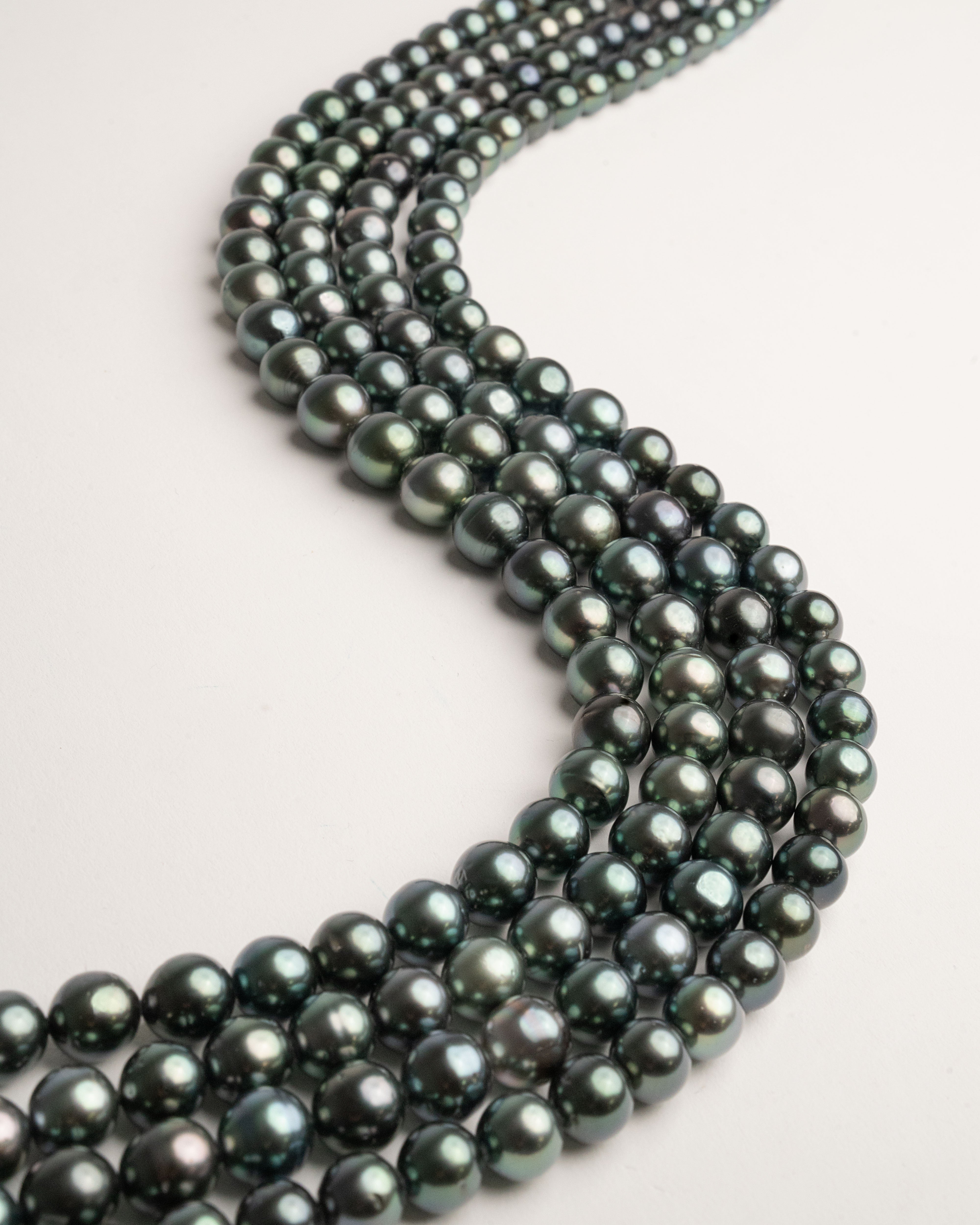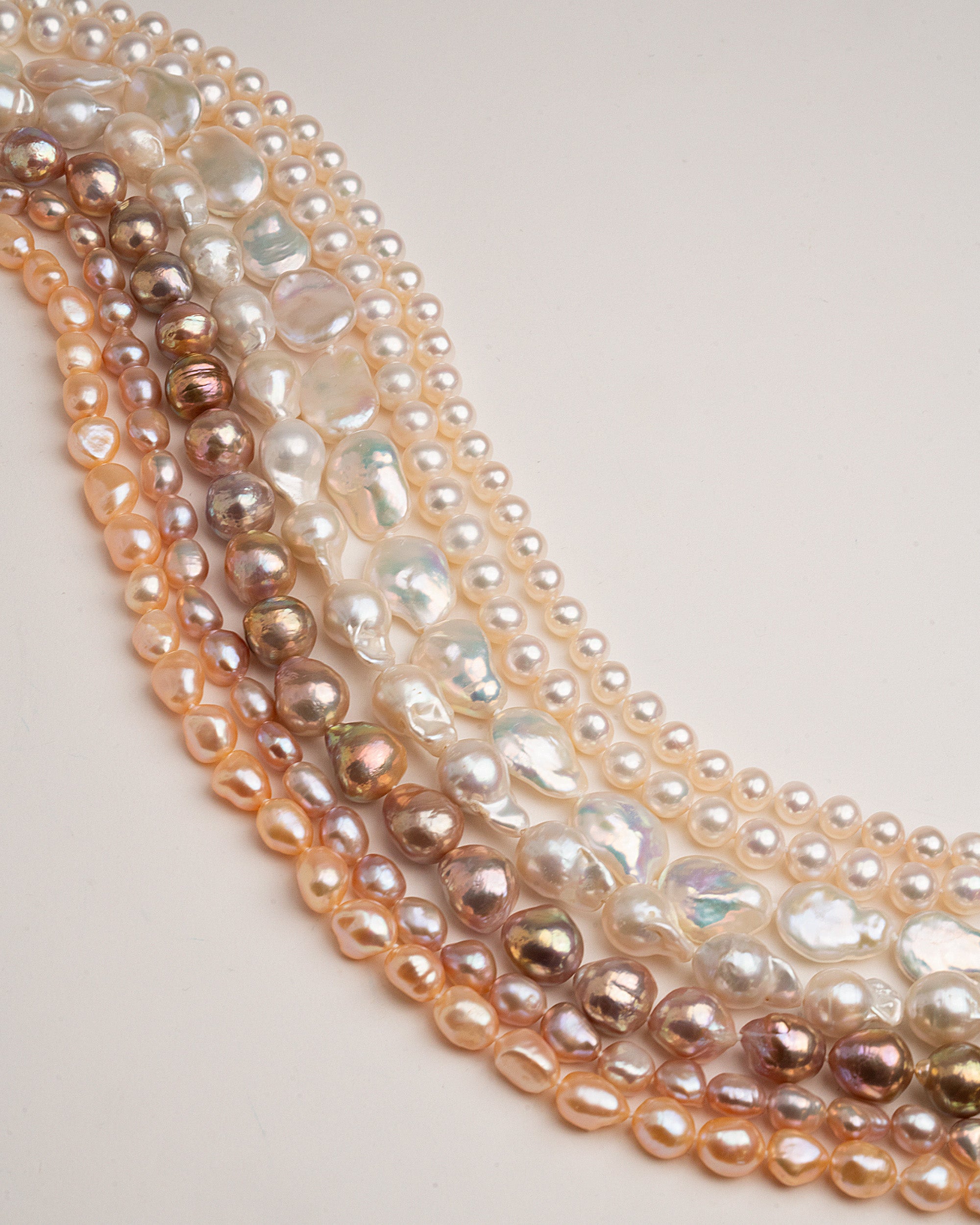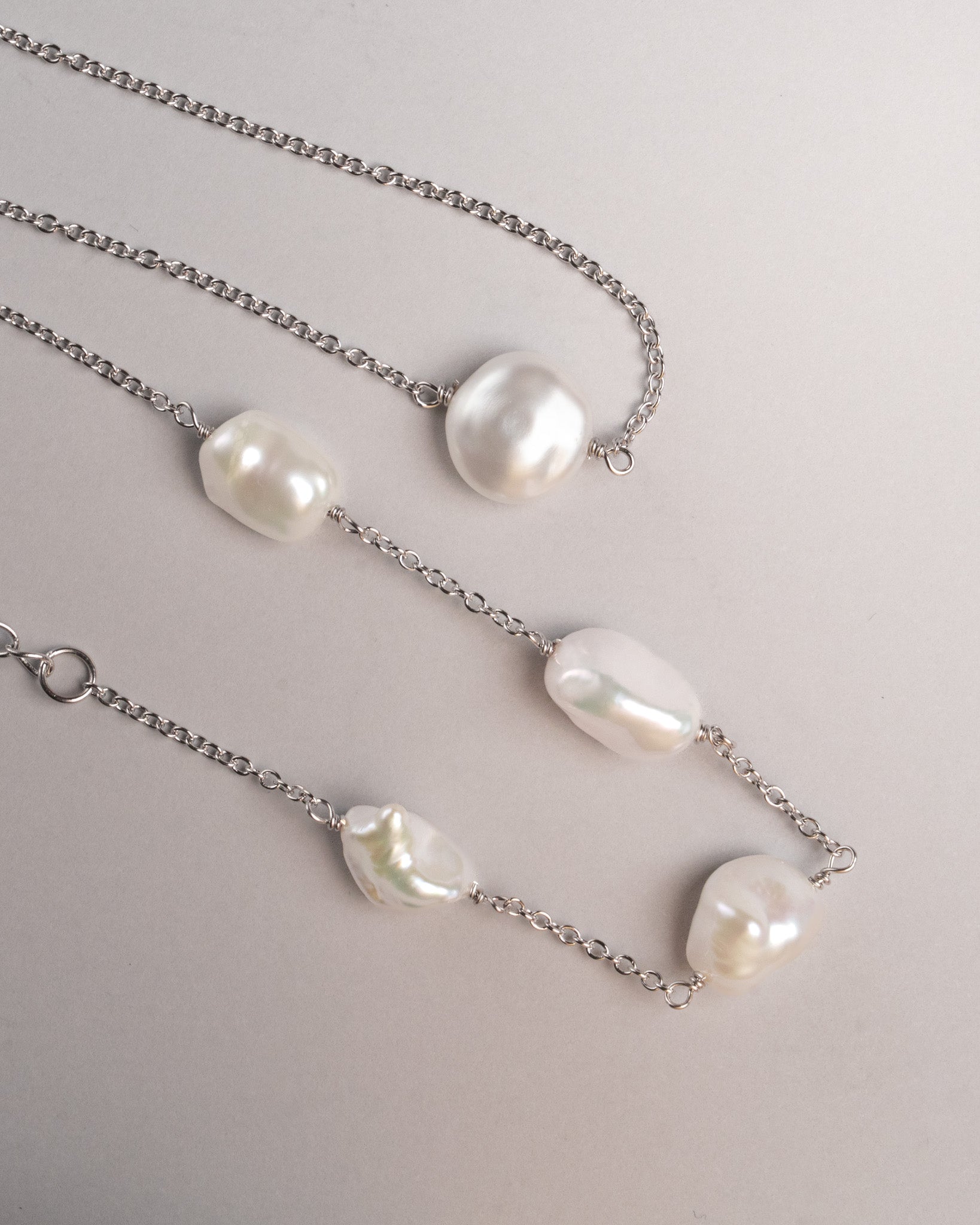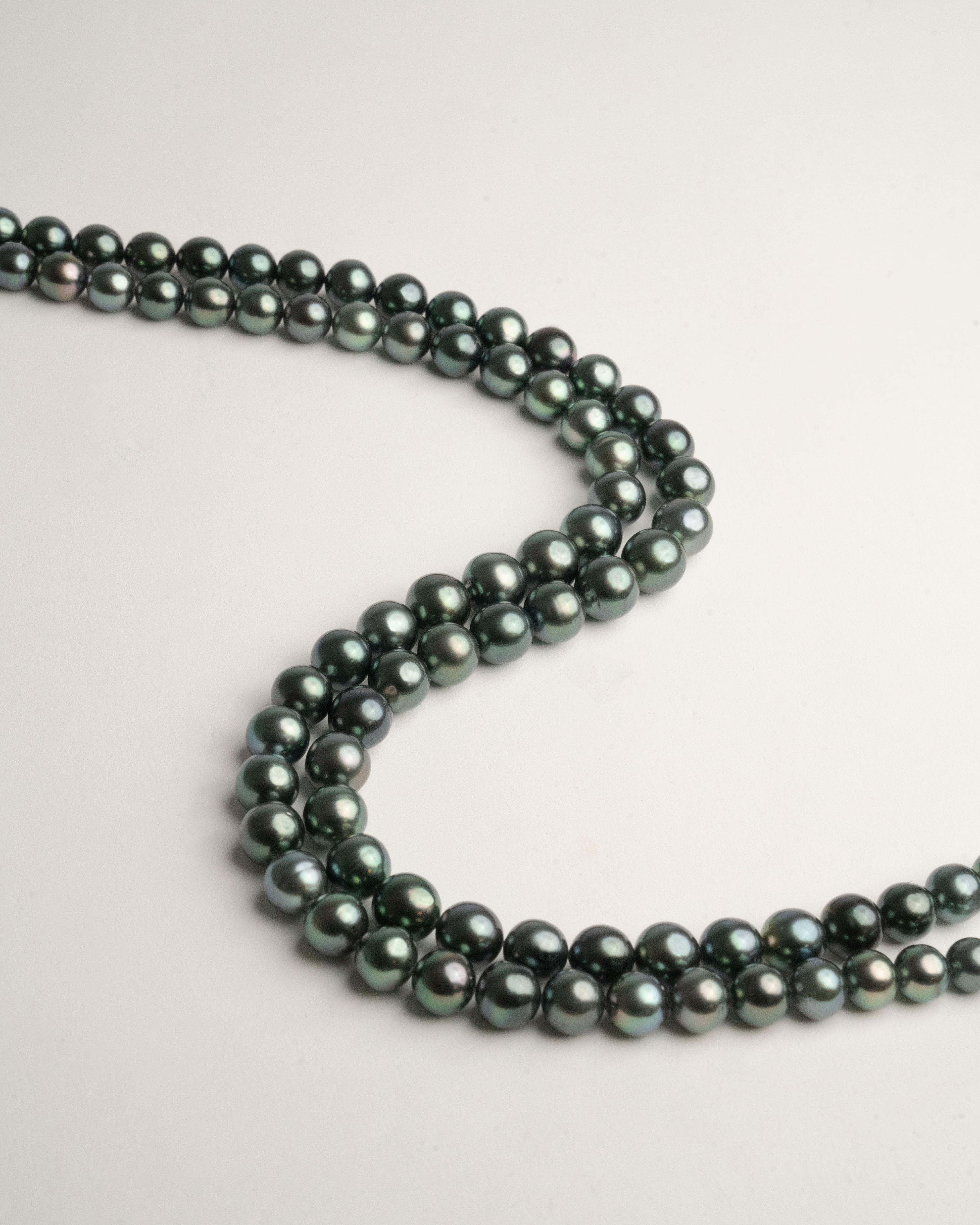Australian Cultured Pearls
The Queen of Gems
The pearls of the Pinctada Maxima oyster are known as Australian pearls in Spain and as South Sea pearls in the rest of the world, which which is more accurate, since they are not only grown in Australia.
They are the rarest and most valuable due to their large size, scarcity of growing areas, and the long growing period they require. Its colors range from pure white to deep gold, passing through slightly silver tones. The luster of Australian pearls, whether white or gold, is deep, smooth, silky and elegant. Only a small percentage of these pearls are spherical, so getting an Australian pearl necklace of the same size, shape and quality is extremely difficult.
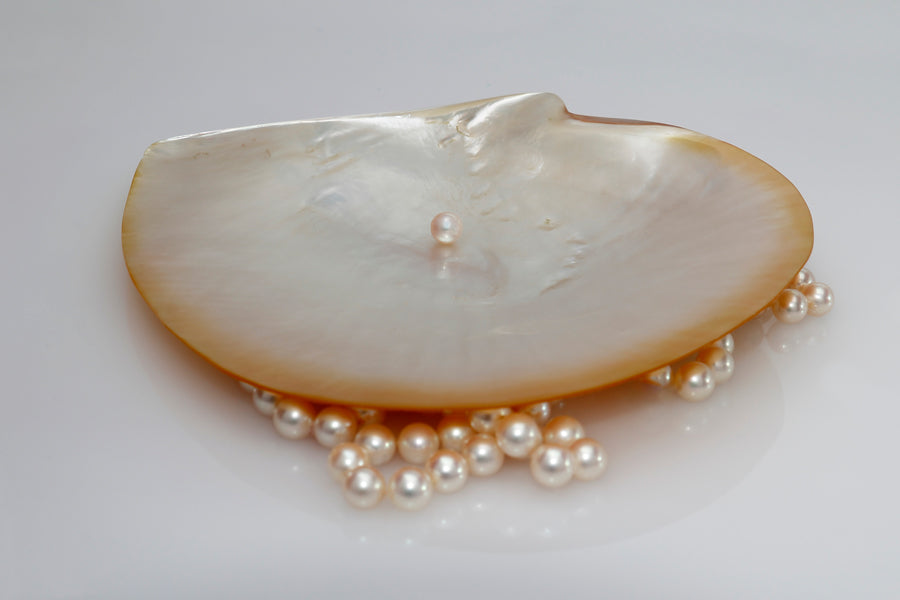
Australian pearls in a golden-lipped Pinctata Maxima oyster
Sizes, shapes and colors
The Australian pearls range from 8 to 20 mm, with the average being 12 mm, since pearls larger than 15 mm are very rare, however, although extremely rare, some pearls larger than 20mm have been found. Only 10-30% of each crop will be round or semi round. In addition to the above, these pearls can also be found in drop, baroque and keshi shapes with a multitude of facets.
South Sea pearl oysters with silver lip generally produce pearls in shades of white, silver and blue. These are mainly cultivated in Australia and hence we know them as Australian pearls. The golden lip variety, on the other hand, produces pearls of cream, champagne, and deep gold. The latter are cultivated mainly in the Philippine Islands.

Where do Australian cultured pearls come from?
Most of the white South Sea pearls are farmed along the northwest coast of Australia, while the golden variety are produced primarily in the Philippines and Indonesia, two countries that are fast becoming the leaders in the production of golden South Sea pearls.
In the 1850s, the city of Broome, on the northwest coast of Australia, became the center of trade for natural South Sea pearls. A century later during the 1950s, large-scale pearl farming began and has grown steadily ever since. Today, Broome still dominates the South Sea white pearl industry and has grown into a beautiful, modern city that reflects the high-tech of the business.

Horizontal Falls in Talbot Bay a well-known Australian pearl-growing area near Broome

